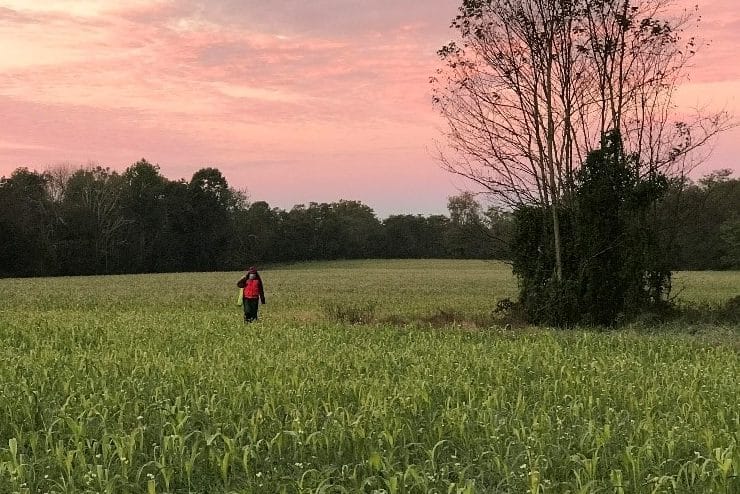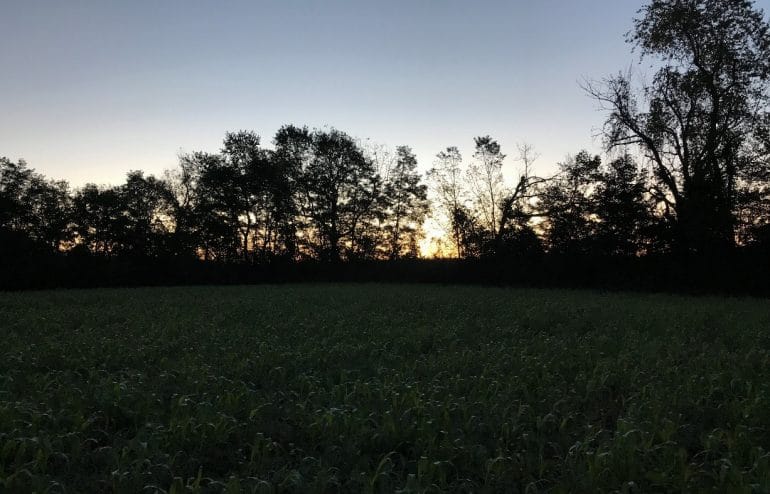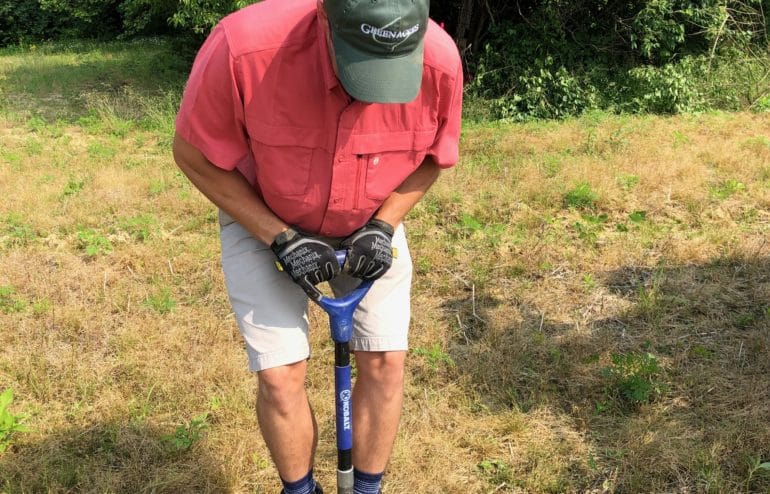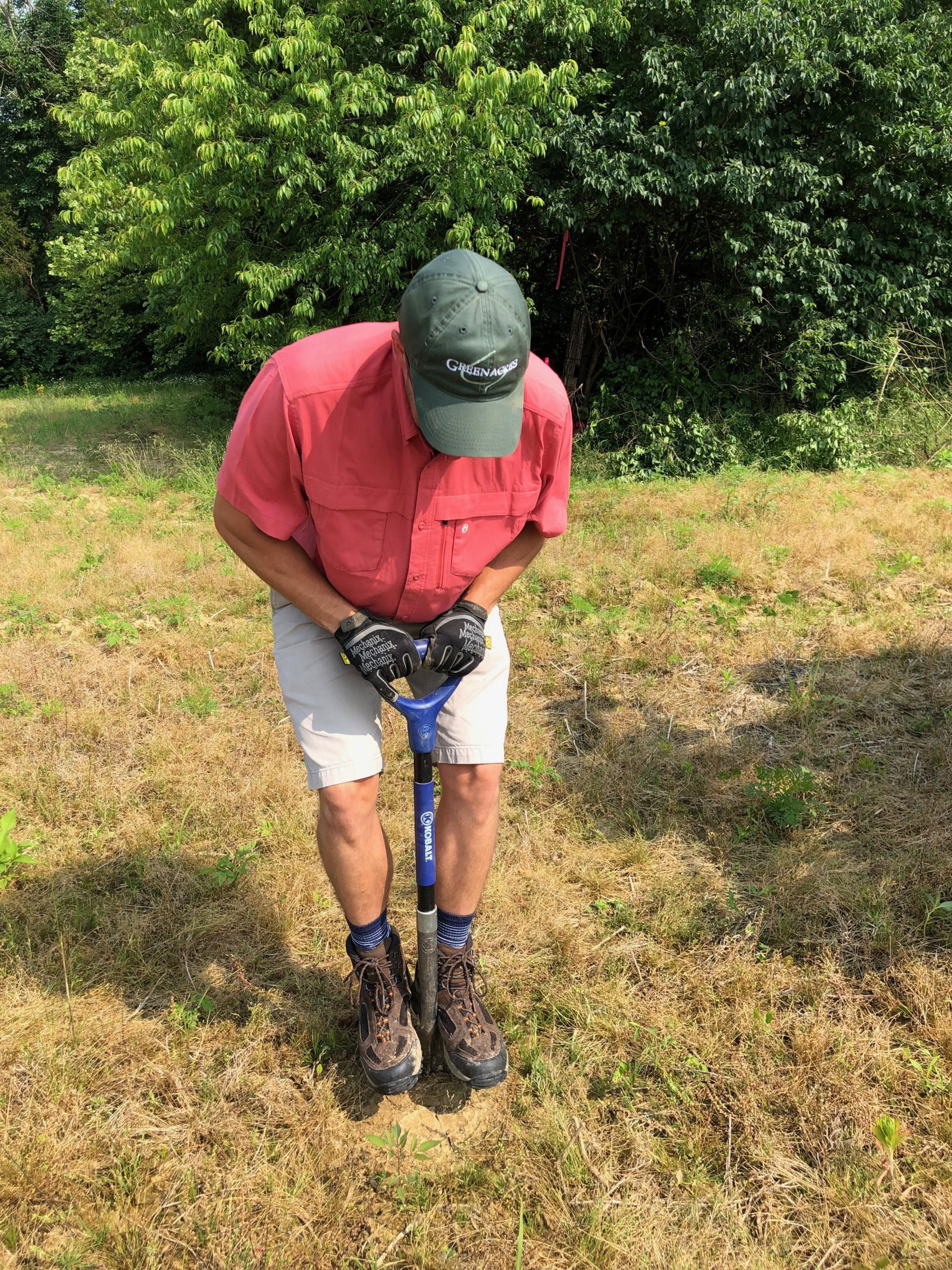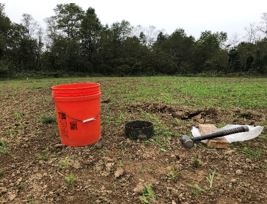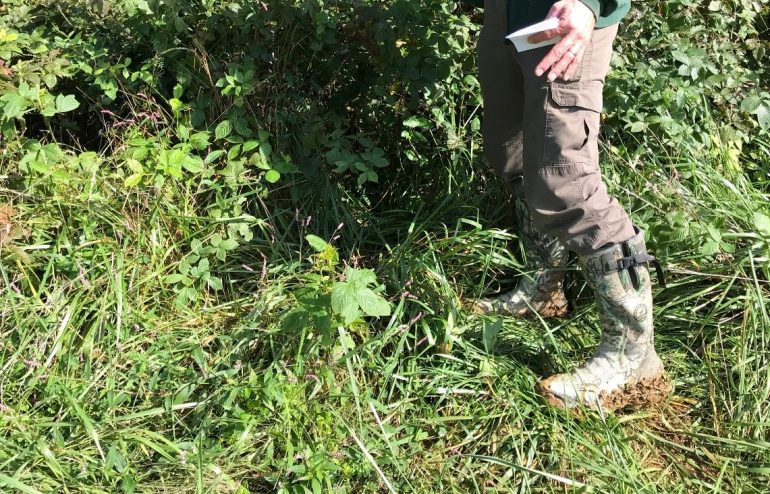The past week has been a little busy in Indian Hill so we finally got a chance to do our third and final covey call count today. It sounds like the coveys are located around one specific area so this time I didn’t want to take any chances and not hear them. Jennifer and I split up again but stayed within sight of one another (once the sun came up) so we were both in the area where the quail were heard the first and second time. Finally I heard it! The covey call that had been eluding me the first two trips was just south of where I was sitting. After the sun came up Jennifer and I both agreed on the direction that I heard the sound, however she also heard one to the northeast of where we were. We thought we would try flushing the birds to try to see if we could get a count so we headed toward the edges of the field. We had no luck getting the birds to flush out of their coveys but we both feel pretty confident that we at least have some quail walking about the Lewis Township property. Now the goal is to see if we can increase our quail populations through improved habitat establishment and quail-beneficial management practices. Call counts and quail monitoring will be an ongoing practice for our research team. We are already looking forward to some early chilly mornings next October.
Today Jennifer and I got another early start to do some covey call counts and hopefully hear the coveys that our resident bird expert Joe heard a couple of days ago. It was another clear and chilly morning and this time I was a little more prepared by bringing a fold up camp chair. I found out that standing still in the middle of a field in 20 degree weather can be hard on your back! With a head lamp, chair, and a thermos of hot tea, we walked back to the same location where Joe was situated on our previous visit. We still thought it would be a good idea to split up and go on opposite sides of the tree line, hoping we could better locate the direction in which the covey calls were coming from. I kept looking at my cell phone to be prepared for when 7:14am approached so I could be extra focused. 7:14am came and went, then 7:29am. Next thing I know, the sun is up. Maybe Joe didn’t hear them…or maybe it’s just me? When Jennifer and I met back at the tree line where we separated she excitedly said “did you hear them!?” Nope. Well…I guess it is me. Next time we go to Lewis Township I’m sitting right where Jennifer and Joe were located so I can get in on the action too! Good news is, Jennifer was pretty sure it was a covey call so we’re one step closer to confirming we have some quail populations. And once again, as you can see in the picture, it was another beautiful early morning – a great way to start the day.

